Cultivate Magazine
Grade K-3 Issue
In This Issue:
IntervIew wIth an artPrIZe artISt
what IS contemPorary art?

texture Scavenger hunt and more!
Cultivate Magazine Presented by ArtPrize
Art and Design Magazine for Kids, featuring Artists of ArtPrize

2
Building an event is a lot like the act of creation. The process can be busy at times, relaxing at others. You’re filled with a range of conflicting emotions. Confidence is met with self-doubt. And sometimes our ideas can be limited to the materials we use.
But each time the good, hard work is done, our minds become richer and more fertile for the ideas that will follow. New growth will take root. It’s true for us as individuals, for us as an organization—and it’s true for the next generation of creative thinkers we seek to encourage.
For the second year, ArtPrize is teaming up with the amazing staff at Cultivate. We’re proud to partner with them again for this year's Education Days. Cultivate puts equity, accessibility, and multiple learning styles at the forefront of education. All their activities are made available for free, to ensure that all students may have access to high-quality arts education and programming. We couldn’t be more thrilled to have them elevating ArtPrize this year through these magazines, field trips, educational resources, and art tours.
Enjoy the art. And stay curious.
Catlin Whitington ArtPrize Executive Director
ArtPrize Education is supported in part by the Michigan Arts and Culture Council

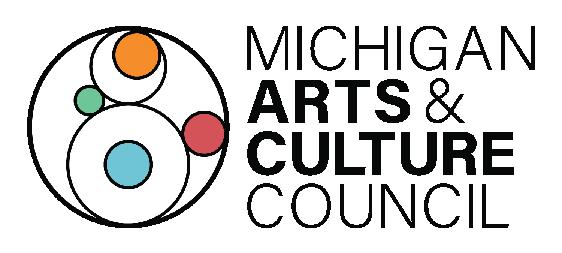
1 ArtPrize Education Days
In This Issue
Cover: Karen Olree [2D] Growth @ The B.O.B. Image Courtesy of Artist
ArtPrize Artists Images:
Ryan McCallister [3D] Count On Me @ Amway Grand Plaza, Image Courtesy of Artist
Maddison Chaffer [2D] Look About You! @ Tin Can/City View Flats, Image
Courtesy of Artist
Tatsuki Hakoyama [2D] A Past and Future Secret @ DeVos Place Convention Center, Image Courtesy of Artist
David Najib [2D] Remainder of Mother + Son - Siblings & Baba Underneath the Rubble @ ArtPrize Clubhouse, Image Courtesy of Artist
Images:
Yayoi Kusama’s A Bouquet of Love I Saw In The Universe Image via Flicker by RG TLV https://tinyurl.com/3pak868u
Robert Smithson’s Spiral Jetty Image via Flickr by Lee Shoal https://tinyurl. com/5c9n7vrv
Michael Heizer’s Double Negative Image via Flickr by Retis https://tinyurl. com/4bapwjxd
Nancy Holt’s Sun Tunnels Image via Flickr by Rene_Beignet https://tinyurl. com/4bapwjxd
Illustrator Image: Kat VanderWeele, Afternoon Snack, Mixed-Media, Acrylic and Oil Pastel, 2023, Image Courtesy of Artist
Cartoonist Image: Naomi Carrol, Pulga, Digital Illustration, 2021, Image
Courtesy of Artist
Oil Painting (c) Gorodenkoff / Adobe Stock
Gallery Hanging (c) Pressmaster / Adobe Stock
Fashion Designer (c) REDPIXEL / Adobe Stock
Construction Toys (c) Degimages / Adobe Stock
Female Video Game Designer (c) Gorodenkoff / Adobe Stock
Skyline Oil Painting (c) elen31 / Adobe Stock
Summer in the Mountains (c) weris7554 / Adobe Stock
Calder’s The Big Red Thing Image via Wikicommons by Magnus Manske https://tinyurl.com/4tvh2jhr
Curation
Mallory Shotwell
Graphic Design/Spot Illustration: Claudia Pimentel
Editorial/Copywriting: Mallory Shotwell
Actively teaching the Art and Artists of ArtPrize, Cultivate has created three magazines (grades K-3, 4-8, 9-12) that are Common Core standardized that can be a teaching tool and resource for art teachers and students year-round. These magazines will be distributed to art classrooms and schools across West Michigan and available at ArtPrize!
2 Cultivate Who does this book belong to? Name of school
3 What is Contemporary Art? 5 Land Art 7 Different Work of Artists 9 Interview with an ArtPrize Artist 11 Texture Scavenger Hunt 12 Landscapes and Cityscapes in Art 13 What is Typography? 14 Shapes and Form 15 All About Lines
What is Contemporary Art?
Contemporary art is a type of art that is being made right now, by artists who are alive today. It can be anything from paintings, sculptures, photographs, videos, installations, and more. Contemporary artists often use new and different techniques and materials to create their work.
For example, some contemporary artists might use computers or other technology to create their art. Others might use everyday objects, like plastic bags or old newspapers, to make sculptures. Some artists might even create interactive art that people can touch and play with!
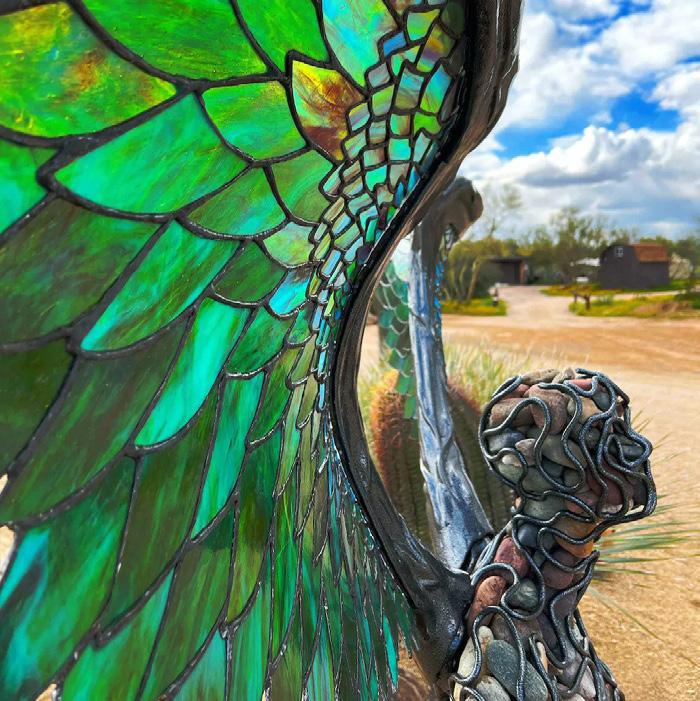
Overall, contemporary art is a type of art that is being created by artists who are alive today and can include a wide variety of techniques and materials.


3 ArtPrize Education Days
Contemporary Artists of ArtPrize That You Can Visit This Year!
Count
73997
Ryan McCallister [3D]
On Me @ Amway Grand Plaza, VOTE ID
Maddison Chaffer [2D] Look About You! @ Tin Can/City View Flats, VOTE ID 42223
Tatsuki Hakoyama [2D] A Past and Future Secret @ DeVos Place Convention Center, VOTE ID 72291
Famous Contemporary Artists in History
Kara Walker, Yayoi Kusama, and Jean-Michel Basquiat are all contemporary artists who have made significant contributions to the world of art.
Kara Walker is an American artist who is known for creating large-scale, black and white silhouettes that explore issues of race, gender, and power. One of her most famous works is “A Subtlety,” a massive sculpture of a sphinx-like figure made of sugar, which was displayed in a former sugar refinery in Brooklyn, New York in 2014.
Jean-Michel Basquiat was an American artist who rose to fame in the 1980s as part of the New York City art scene. His work often combined words, symbols, and images from popular culture with social commentary and political messages. Basquiat’s paintings are known for their raw energy and bold, expressive style.
Yayoi Kusama is a Japanese artist who is known for her colorful, psychedelic artwork. She is particularly famous for her “Infinity Rooms,” which are immersive installations filled with mirrors and twinkling lights that create the illusion of infinite space. Her work often deals with themes of infinity, repetition, and the interconnectedness of all things.
Kara Walker’s A Subtlety

Jean-Michel Basquiat

Untitled Skull
Yayoi Kusama A Bouquet of Love I Saw in the Universe
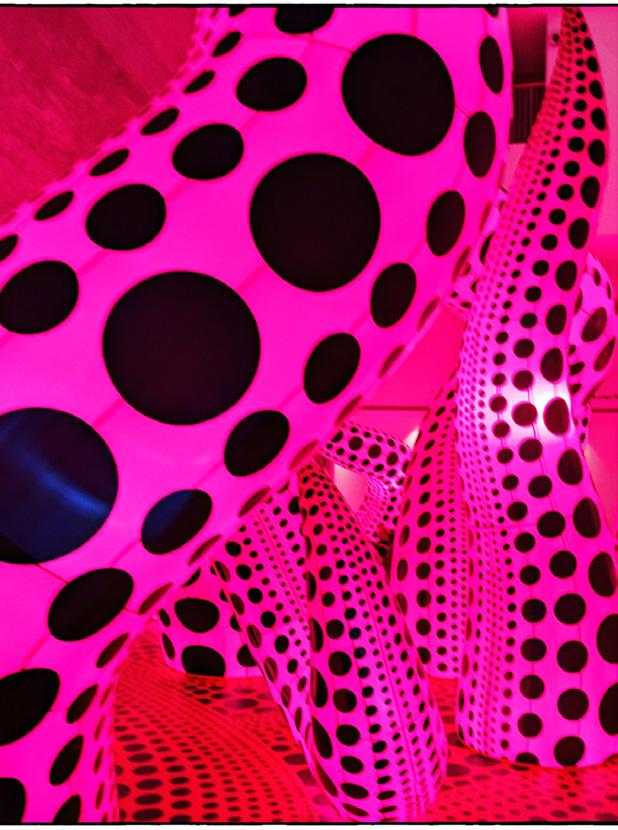
4 Cultivate
Land Art
Land Art is a form of art that uses natural materials found in nature, such as rocks, dirt, and plants, to create sculptures and installations.
Land Art can be traced back to the 1960s and 1970s, when a group of artists began experimenting with creating art that was not confined to a traditional gallery space. They wanted to create art that was integrated with nature and the landscape around them.

One famous example of land art is Robert Smithson’s Spiral Jetty, located in Utah’s Great Salt Lake. Smithson used rocks and earth to create a massive spiral shape that juts out into the water. Another example is Michael Heizer’s Double Negative, located in Nevada’s desert. Heizer carved out two massive trenches in the earth, creating a negative space that is both striking and haunting.

5 ArtPrize Education Days
Land art has become increasingly popular in recent years as people become more aware of environmental issues and the impact humans have on the natural world. Land art serves as a reminder of the beauty and power of nature and our responsibility to protect it.
Robert Smithson, Spiral Jetty
Michael Heizer, Double Negative
A notable female artist who has worked in the field of land art is Nancy Holt. Holt was an American artist who worked primarily in the 1960s and 1970s. She is perhaps best known for her work Sun Tunnels (seen below), which is located in the Utah desert. Sun Tunnels consists of four large concrete pipes arranged in a cross shape, with holes cut out to create patterns of light and shadow on the ground. The work is meant to be experienced both during the day, when the sun shines through the pipes, and at night, when the stars can be seen through the holes. Holt’s work is an excellent example of how land art can engage with the natural environment and create a unique and memorable experience for viewers.
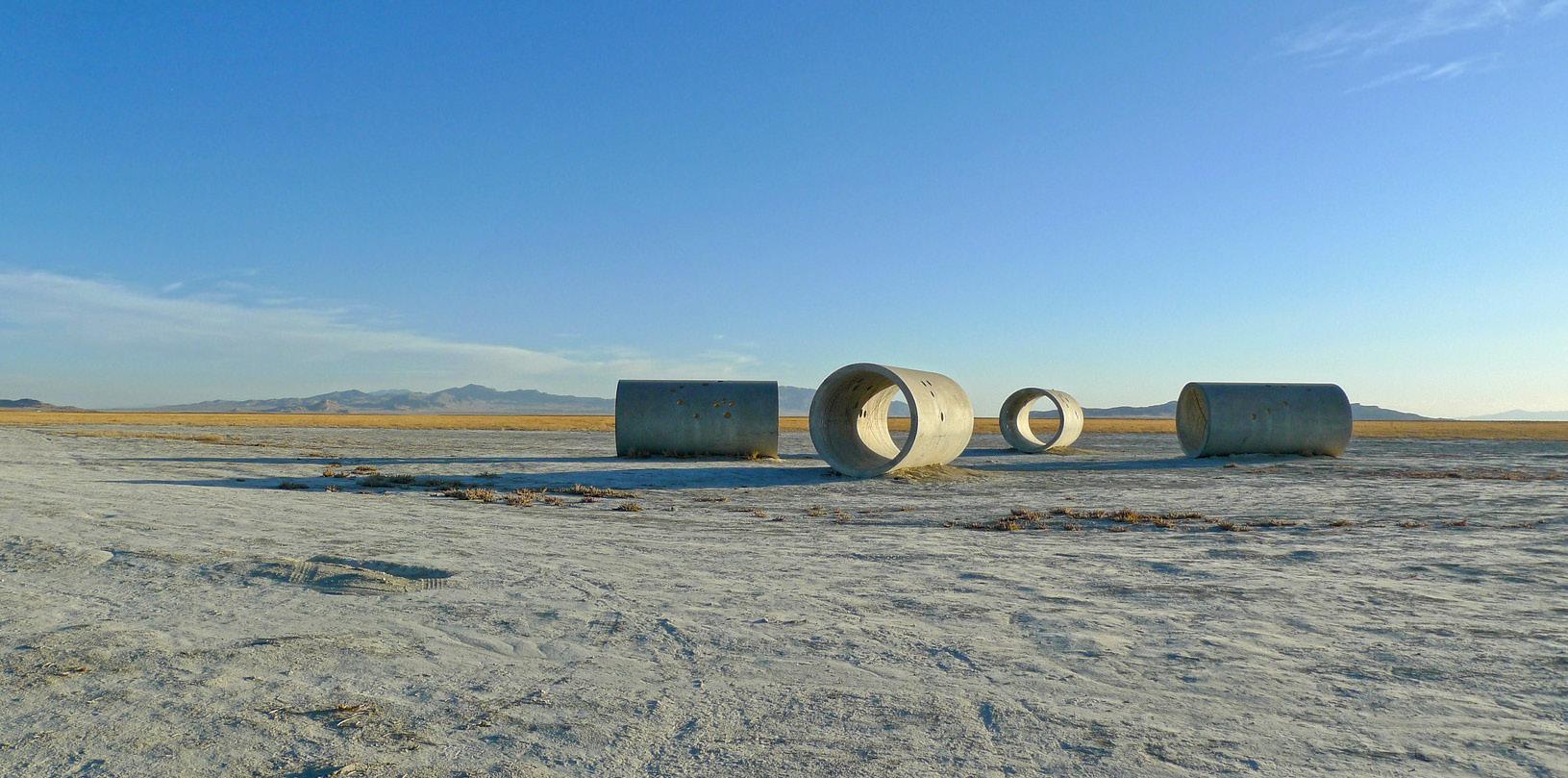
Land art can take many forms, from large-scale installations to small sculptures. Some land artists use natural materials to create temporary works that will eventually be reclaimed by nature, while others create permanent works that will stand the test of time.
Land art has become increasingly popular in recent years as people become more aware of environmental issues and the impact humans have on the natural world. Land art serves as a reminder of the beauty and power of nature and our responsibility to protect it.
Land art serves as a reminder of the importance of protecting our environment!
6 Cultivate
Nancy Holt, Sun Tunnels
Different Work of Artists
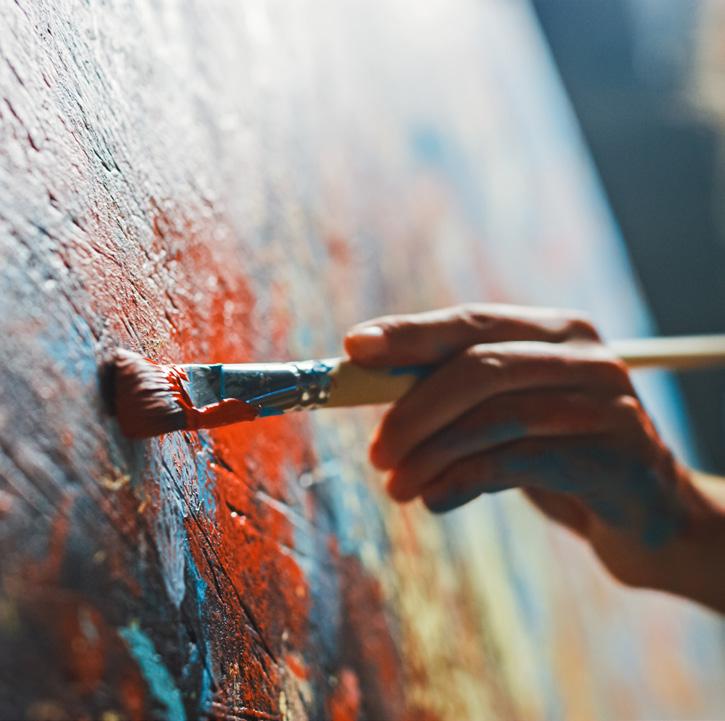

An illustrator is a professional artist who creates images of ideas, concepts, and narratives for various media, using a range of techniques such as drawing, painting, and digital software. They typically work with clients to understand their needs and vision and create unique and engaging illustrations that communicate their message effectively.
A fine artist is a professional who creates visual or performing art for aesthetic or conceptual purposes, often using traditional techniques and mediums such as painting, sculpture, or printmaking. They may work independently or as part of a larger artistic community, and their work is often exhibited in galleries, museums, and other cultural institutions.
A cartoonist is an artist who specializes in creating illustrations, often humorous or satirical in nature, for publication in print or online media. They use a variety of techniques such as drawing, painting, and digital software to create their works.

7 ArtPrize Education Days
Illustrator
Fine Artist
Cartoonist
An art preparator is responsible for the physical handling, installation, and maintenance of artwork in a gallery or museum setting. This may include tasks such as packing and unpacking artwork, hanging and lighting exhibitions, and preparing labels and signage.

A fashion designer is a person who creates original clothing and accessory designs. They use their imagination and creativity to make sketches, patterns, and samples of their ideas. Fashion designers also work with other people in the industry to make sure their designs are fashionable and practical for people to wear.

A toy designer is responsible for creating and designing new toys and games for children of various ages. They collaborate with a team of designers, engineers, and manufacturers to ensure that the toys are safe, durable, and fun! The job requires creativity, attention to detail, and a deep understanding of child development and play.

A video game designer is a person who creates fun and exciting games that people can play on computers or other devices. They use their imagination and knowledge of technology to design characters, levels, and challenges in the game.

8 Cultivate
Art Preparator
Fashion Designer
Toy Designer
Video Game Designer
INTERVIEW with an ArtPrize Artist!
David Najib Kasir, Contemporary Oil Painter
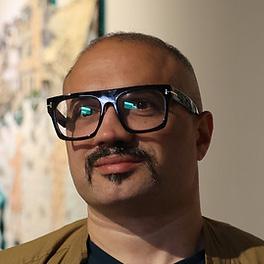
Can you tell us about your art?
My work comprised of personal narrative and surrounds the act of coming to terms with the challenges of family, life, love and loss.
What is your favorite thing to draw or paint, and why?
I like to draw my friends and family. It’s not a part of my work and allows me to not take it as seriously and just relax, as I watch tv or a movie at night.
What art mediums do you use and why?
That depends on what I am working on. Some things I make demand to be painted with oil paints and others might be acrylic. Some work I have done in the past would only work with Encaustic paint, which is a wax paint with oils.
Where do you get your ideas for your artwork?
That’s hard to answer. A lot of work comes from trial and error and the evolution of it. Some things come from news stories and images I find online.
What’s the most fun part about being an artist?
Art is a lot of hard work. But the fun part is in the exploring and figuring out how things work and how good you can create things. Finding other artists and creating a network and community can also be fun in what you can do as a whole.
9 ArtPrize Education Days
What’s the most challenging part of creating art, and how do you overcome it?
The most challenging part is to create a language and to make sure it is being communicated in the correct way. It can be a lot of sketches of trial and error. But you have to make sure you’re always working things through.
David Najib [2D] Remainder of Mother + Son - Siblings & Baba Underneath the Rubble @ ArtPrize Clubhouse, VOTE ID 16054

Have you ever made a mistake while creating art? What did you do to fix it?
Sometimes while working I might not realize I am making a mistake. So I always take a picture of my work when I am done working for the day or night and study it as I am falling asleep. I will find areas I think is, or isn’t working and focus on it the next day working in the studio.
What advice would you give to kids who want to become artists too?
Work hard and be open to learning everything. Always come in with a back up plan and make sure you’re able or ready to adjust at every moment in creating. Always know that it doesn’t come easy and it’s not supposed to.
10 Cultivate
Try
this at home!
Texture Scavenger Hunt
Welcome to the Texture Scavenger Hunt! This fun activity will challenge your sense of touch as you explore the different textures around your home or neighborhood. Here are some items to find:
PRICKLY - Find an object with spines or prickles, like a cactus or a pinecone.
STICKY - Find an object that feels sticky or tacky, like a piece of tape or a sticker.
BUMPY - Look for an item with a rough or bumpy surface, such as a textured wall or a rock with bumps.
SMOOTH - Find something that feels very smooth, like a polished stone or a glass surface.
SQUISHY - Look for an object that is squishy and pliable, such as a stress ball or a foam cushion.
FUZZY - Find an object that is soft and fuzzy to the touch, like a stuffed animal or a furry blanket.
SLIMY - Look for an object that feels slimy or gooey to the touch, like a slime toy or a piece of wet seaweed.
ROUGH - Find an object with a rough surface, like sandpaper or a rough-textured rug.
HARD - Look for an object that is very hard and solid, like a rock or a piece of metal.
CRUNCHY - Look for an object that makes a crunchy sound or has a crunchy texture, like a cracker or a pile of dry leaves.
Have fun exploring and see how many textures you can find! 11 ArtPrize Education Days
Landscapes and Cityscapes in Art

Landscape art shows pictures of outdoor scenery like mountains, forests, rivers, and fields. Artists use different colors and brush strokes to create the look and feel of a specific place. Sometimes, they even paint the sky and the clouds to show what the weather was like when they were painting.

Cityscape art shows pictures of buildings and streets in a city. Artists use different colors and shapes to make the buildings and streets. They might show people and cars in the city too, to make it look like a busy place. Sometimes, cityscape art shows a city landmark, like the Calder Sculpture or the fish ladder in Grand Rapids, to show where the city is located.

12 Cultivate
What is Typography?
Typography is a fancy word for how words look on a page or a screen. It’s like an art that helps people READ and understand things better. When people use typography, they choose different styles and sizes of letters and spaces between them to make words easier to read and look nice. Typography is important for things like books, websites, and signs, so people can understand what they say easily.
Font is a collection of letters and other symbols used for text
Serif is a style that has a small line added to letters, numbers, and punctuation S
Sans Serif is a font style without Serifs S
Italic is a font style with letters slanted slightly to the right S
Bold is a font style designed with a heavier appearance, often for empahsis S
Try this at home!
Can you make a face using only letters?
13 ArtPrize Education Days
A BC D E F G H I I J K L M N O P Q
Shapes and Forms!
Can you draw these shapes? Let’s make them 3D!
14 Cultivate
IT!
with us
our
QR CODE
MAKE
Share
on
website!
All About Lines
In art, a line is a path that a point takes through space, and it can be different lengths, widths, colors, and textures. There are many different types of lines that artists use! Here are a few examples:
Straight lines don’t curve or bend, and can be used to create a sense of stability and order in a work of art. Straight lines can be used to show the edges of a building.
Curved lines bend and curve, and can create a sense of movement or flow in a work of art. Curved lines might be used to show the way water in a river flows.
Thick lines are wide and can be used to create a sense of boldness or strength in a work of art. Thick lines can be used to show the power of a superhero.
Thin lines are very narrow, and can be used to create a sense of delicacy or lightness in a work of art. In a painting of a flower, thin lines might be used to show delicate petals.
By using different types of lines, artists can create many different effects in their work. Lines can have a big impact on the overall look and feel of the art!
15 ArtPrize Education Days
For the of Art ( Prize )





























